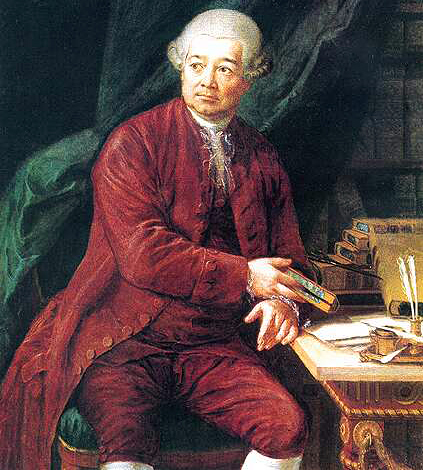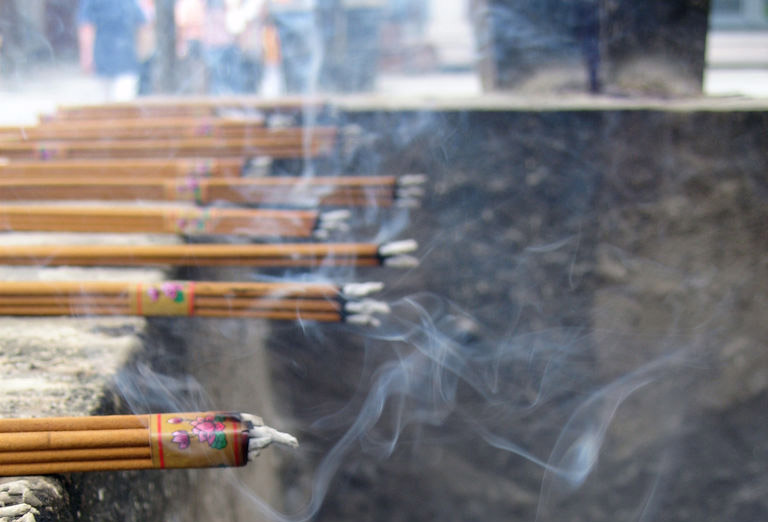|
Zapis
A ''zapis'' ( sr-Cyrl, запис, , literally "inscription"; plural: ''zapisi'' (записи)) is a sacred tree in Serbian Orthodox tradition, protecting the village within whose bounds it is situated. A cross is inscribed into the bark of each ''zapis''. Most of these trees are large oaks. Prayers are offered to God under the crown of the ''zapis'', where church services may also be held, especially during village festivals observed to supplicate God for protection against destructive weather conditions. In settlements without a church, ceremonies such as weddings and baptisms were once conducted under the tree. Folk tradition maintains that great misfortune will befall anyone that dares fell a ''zapis''. According to Serbian scholar Veselin Čajkanović, the ''zapis'' is inherited from Slavic paganism, the pre-Christian religion of the Serbs, in which it had been used as a temple. Religious practices The selected tree becomes a ''zapis'' through the rite of consecration perfo ... [...More Info...] [...Related Items...] OR: [Wikipedia] [Google] [Baidu] [Amazon] |
Sacred Tree
A sacred tree or holy tree is a tree which is considered to be sacred, or worthy of spiritual respect or reverence. Such trees appear throughout world history in various cultures including the ancient Hindu mythology, Greek, Celtic and Germanic mythologies and is central to the beliefs of The Church of Jesus Christ of Latter-day Saints. They also continue to hold profound meaning in contemporary culture in places like Japan (''shinboku''), Korea (''dangsan namu''), India (bodhi tree), and the Philippines, among others. Tree worship is core part of religions which include aspects of animism as core elements of their belief, which is the belief that trees, forests, rivers, mountains, etc. have a life force ('anime', i.e., ''alive''). An example of the continued importance of sacred trees in contemporary urban culture is the 700-year old camphor growing in the middle of Kayashima Station. Locals protested against moving the tree when the railway station had to be expanded, so the s ... [...More Info...] [...Related Items...] OR: [Wikipedia] [Google] [Baidu] [Amazon] |
Bukva - Zapis Iz Okoline Crne Trave
Bukva is a village in the municipality of Kreševo, Bosnia and Herzegovina Bosnia and Herzegovina, sometimes known as Bosnia-Herzegovina and informally as Bosnia, is a country in Southeast Europe. Situated on the Balkans, Balkan Peninsula, it borders Serbia to the east, Montenegro to the southeast, and Croatia to th .... Demographics According to the 2013 census, its population was 99. References Populated places in Kreševo {{CentralBosniaCanton-geo-stub ... [...More Info...] [...Related Items...] OR: [Wikipedia] [Google] [Baidu] [Amazon] |
Sacrifice
Sacrifice is an act or offering made to a deity. A sacrifice can serve as propitiation, or a sacrifice can be an offering of praise and thanksgiving. Evidence of ritual animal sacrifice has been seen at least since ancient Hebrews and Greeks, and possibly existed before that. Evidence of ritual human sacrifice can also be found back to at least pre-Columbian civilizations of Mesoamerica as well as in European civilizations. Varieties of ritual non-human sacrifices are practiced by numerous religions today. Terminology The Latin term ''sacrificium'' (a sacrifice) derived from Latin ''sacrificus'' (performing priestly functions or sacrifices), which combined the concepts ''sacra'' (sacred things) and ''facere'' (to make, to do). The Latin word ''sacrificium'' came to apply to the Christian eucharist in particular, sometimes named a "bloodless sacrifice" to distinguish it from blood sacrifices. In individual non-Christian ethnic religions, terms translated as "sacrifice" ... [...More Info...] [...Related Items...] OR: [Wikipedia] [Google] [Baidu] [Amazon] |
Ethnology
Ethnology (from the , meaning 'nation') is an academic field and discipline that compares and analyzes the characteristics of different peoples and the relationships between them (compare cultural, social, or sociocultural anthropology). Scientific discipline Compared to ethnography, the study of single groups through direct contact with the culture, ethnology takes the research that ethnographers have compiled and then compares and contrasts different cultures. The term ''ethnologia'' (''ethnology'') is credited to Adam Franz Kollár (1718–1783) who used and defined it in his ''Historiae ivrisqve pvblici Regni Vngariae amoenitates'' published in Vienna in 1783. as: "the science of nations and peoples, or, that study of learned men in which they inquire into the origins, languages, customs, and institutions of various nations, and finally into the fatherland and ancient seats, in order to be able better to judge the nations and peoples in their own times." Kollár's int ... [...More Info...] [...Related Items...] OR: [Wikipedia] [Google] [Baidu] [Amazon] |
Gruža (region)
The Gruža ( sr-Cyr, Гружа, ) is a geographical region in central Serbia. The region, containing a village of the same name, due to its location is poetically referred to as the ''Heart of Šumadija''. Geography The region is located in the valley of the Gruža river, with developed agriculture and numerous settlements. The watershed itself covers , but the region covers as it includes the valley of the Velika Reka. The Gruža is a micro-region and makes the southern part of the Šumadija region of central Serbia (also called High Šumadija). It stretches in the northwest-southeast direction, and is bounded by the West Pomoravlje to the south, the Gledić Mountains and the Levač region to the east, Rudnik and Ješevac mopuntains, and Takovo and Lepenica regions to the north, and the Kotlenik mountain to the west. The central part of the region is the Gruža Depression. Due to its geographical location, in the center of Serbia, it is nicknamed the Heart of Serbia o ... [...More Info...] [...Related Items...] OR: [Wikipedia] [Google] [Baidu] [Amazon] |
Great Lent
Great Lent, or the Great Fast (Greek language, Greek: Μεγάλη Τεσσαρακοστή, ''Megali Tessarakosti'' or Μεγάλη Νηστεία, ''Megali Nisteia'', meaning "Great 40 Days", and "Great Fast", respectively), is the most important fasting season of the church year within many denominations of Eastern Christianity. It is intended to prepare Christians for the greatest feast of the church year, Easter, Pascha (Easter). Great Lent shares its origins with the Lent, Lent of Western Christianity and has many similarities with it. There are some differences in the timing of Lent, besides calculating the date of Easter and how it is practiced, both liturgically in the public worship of the church and individually. One difference between Eastern Christianity and Western Christianity is the calculation of the date of Easter (see Computus). Most years, the Eastern Pascha falls after the Western Easter, and it may be as much as five weeks later; occasionally, the two dat ... [...More Info...] [...Related Items...] OR: [Wikipedia] [Google] [Baidu] [Amazon] |
Kolo (dance)
Kolo () is a South Slavs, South Slavic circle dance, found under this name in Bosnia and Herzegovina, Croatia, and Serbia. It is inscribed on the UNESCO Intangible Cultural Heritage Lists, UNESCO List of Intangible Cultural Heritage for Serbia. Hungarians, Hungarian communities were also influenced by the tradition, where a similar dance is known as ''Kalala.'' Description The circle dance is usually performed amongst groups of at least three people and up to several dozen people. Dance, Dancers hold each other's hands or each other's waists. They form a circle, a single chain or multiple parallel lines. Kolo requires almost no movement above the waist. The basic steps are easy to learn. Experienced dancers demonstrate virtuosity by adding different ornamental elements, such as syncopated steps. Each region has at least one unique kolo. It is difficult to master the dance and even most experienced dancers cannot master all of them. Kolo is performed at Wedding, weddings, soc ... [...More Info...] [...Related Items...] OR: [Wikipedia] [Google] [Baidu] [Amazon] |
Incense
Incense is an aromatic biotic material that releases fragrant smoke when burnt. The term is used for either the material or the aroma. Incense is used for aesthetic reasons, religious worship, aromatherapy, meditation, and ceremonial reasons. It may also be used as a simple deodorant or insect repellent. Incense is composed of aromatic plant materials, often combined with essential oils. The forms taken by incense differ with the underlying culture, and have changed with advances in technology and increasing number of uses. Incense can generally be separated into two main types: "indirect-burning" and "direct-burning." Indirect-burning incense (or "non-combustible incense") is not capable of burning on its own, and requires a separate heat source. Direct-burning incense (or "combustible incense") is lit directly by a flame and then fanned or blown out, leaving a glowing ember that smoulders and releases a smoky fragrance. Direct-burning incense is either a paste formed around a ... [...More Info...] [...Related Items...] OR: [Wikipedia] [Google] [Baidu] [Amazon] |
Thurible
A thurible (via Old French from -4; we might wonder whether there's a point at which it's appropriate to talk of the beginnings of French, that is, when it wa ... from incense burner suspended from chains, in which incense">Medieval Latin ) is a metal censer">incense burner suspended from chains, in which incense is burned during worship services. It is used in Christian churches, including those of the Catholic Church, Roman Catholic, Eastern Orthodox, Assyrian Church of the East, Oriental Orthodox, Lutheran and Old Catholic denominations, as well as in some Continental Reformed, Presbyterian, Methodist and Anglican churches (with its use almost universal amongst Anglican churches of Anglo Catholic churchmanship). The acolyte or altar server who carries the thurible is called the ''thurifer''. The practice is rooted in the earlier traditions of Judaism dating from the time of the Second Jewish Temple, and is still ceremoniously utilized in some Renewal communities. In C ... [...More Info...] [...Related Items...] OR: [Wikipedia] [Google] [Baidu] [Amazon] |
Icon
An icon () is a religious work of art, most commonly a painting, in the cultures of the Eastern Orthodox, Oriental Orthodox, Catholic Church, Catholic, and Lutheranism, Lutheran churches. The most common subjects include Jesus, Mary, mother of Jesus, Mary, saints, and angels. Although especially associated with portrait-style images concentrating on one or two main figures, the term also covers most of the religious images in a variety of artistic media produced by Eastern Christianity, including narrative scenes, usually from the Bible or the lives of saints. Icons are most commonly painted on wood panels with egg tempera, but they may also be cast in metal or carved in stone or embroidered on cloth or done in mosaic or fresco work or printed on paper or metal, etc. Comparable images from Western Christianity may be classified as "icons", although "iconic" may also be used to describe the static style of a devotional image. In the Greek language, the term for icon painting uses ... [...More Info...] [...Related Items...] OR: [Wikipedia] [Google] [Baidu] [Amazon] |
Apostles' Fast
The Apostles' Fast, also called the Fast of the Holy Apostles, the Fast of Peter and Paul, or sometimes St. Peter's Fast, is a fast observed by Eastern Orthodox, Oriental Orthodox, Eastern Catholic, and Reformed Orthodox Christians. In the Byzantine tradition, the Fast begins on the second Monday after Pentecost (the day after All Saints' Sunday), whereas in the Coptic and old Syriac traditions, the Fast begins on the first Monday after Pentecost. It continues until the Feast of Saints Peter and Paul on June 29. Traditionally, its duration varies from eight to forty-two days because of the moveable nature of Pascha. However, in Eastern Orthodox Churches that follow the Revised Julian calendar, the fast can be as long as 29 days, or may not occur at all in some years. History Having rejoiced for fifty days following Pascha (Easter), the Resurrection of Jesus Christ, the Apostles began to prepare for their departure from Jerusalem to spread Christ's message. According t ... [...More Info...] [...Related Items...] OR: [Wikipedia] [Google] [Baidu] [Amazon] |







